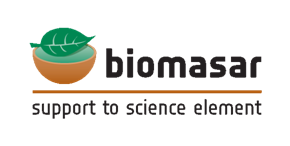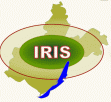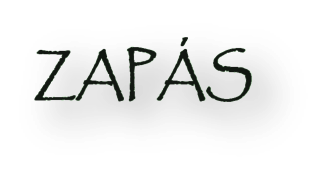Several research projects are contributing to SIB-ESS-C. An overview of former and ongoing projects with focus of Siberia is shown on this site.
BIOMASAR 2 |
|
 |
The aim of BIOMASAR-II is the improvement and enhancement of the BIOMASAR-I algorithm to map forest biomass based on SAR data. The algorithm exploits hyper-temporal series of SAR backscatter measurements to retrieve forest growing stock volume (GSV) and was tested in Canada, Sweden and Siberia. The novel aspects of BIOMASAR-II are now the synergy of multi-source Earth Observation data and independence from in situ data. Further, a pan-boreal GSV map will be created. The information about biomass and biomass changes will be integrated into a process-based ecosystem model to improve forecasts of the global climate. |
DUE Permafrost(Website) |
|
 |
The focus of the ESA DUE Permafrost is to demonstrate and validate, permafrost monitoring information service from local to large scale, mainly towards climate change studies and addressing the pan-boreal/arctic zone. The project acts as a platform between users and earth observation service providers to define user requirements to the remote sensing community and develop key tools to address them |
Forest Dragon 2(Website) |
|
| The Forest DRAGON 2 project forms one part of the DRAGON 2 programme – a cooperation programme of ESA together with the National Remote Sensing Centre of China (NRSCC) in the field of earth observation application development. Due to the fact that Chinese forests have been ongoing constant pressure and existing forest resources are not considered adequate for needs of the Chinese economy and livelihood of people, the Forest DRAGON 2 project aims to monitor the Chinese forests status and development on a regular basis by using earth observation data. For this purpose SAR-based forest growing stock volume maps are created for different years (1995-2005-2010) from which forest cover change is derived. | |
GIONET(Website) |
|
 |
GMES Initial Operations - Network for Earth Observation Research Training (GIONET) funded by the Marie Curie People Actions under the European Seventh Framework Programme will establish a European Centre of Excellence for Earth Observation Research Training that aims to cultivate a community of PhD students skilled in land and emergency monitoring services in collaboration with partners from higher education and industry across Europe. GIONET will develop better methods for monitoring climate change, environmental disasters and land cover change. It will also lead to the development of new methods using satellite monitoring for disaster relief after landslides and floods, controlling deforestation and overseeing the protection of tropical rainforests, as well as for climate change monitoring, lake water quality measurement and coastal erosion assessment. |
IRIS(Website) |
|
 |
The Irkutsk Regional Information System for Environmental Protection (IRIS) assesses the current status and dynamics of the Irkutsk region's forestry environment, influenced by man-made changes and anthropogenic impact. IRIS benefits and contributes to on-going European–Russian cooperation projects. |
KULUNDA(Website) |
|
 |
The main goal of the interdisciplinary KULUNDA project is to mitigate degradation and desertification process, to stabilize and in the long run, to enhance carbon sequestration in soils. It as well aims to increase crop yield by development and implementation of sustainable land management practices for agricultural used areas and by that to contribute to the rural and regional development. The gained knowledge and the results of the KULUNDA project will largely contribute to the research on climate change, sustainable land management and rural and regional development. |
Kyoto & Carbon(Website) |
|
 The ALOS Kyoto & Carbon Initiative is an international collaborative project led by JAXA Earth Observation Research Center (EORC). It forms the continuation of JAXA's JERS-1 SAR Global Rain Forest and Global Boreal Forest Mapping project (GRFM/GBFM) into the era of the Advanced Land Observation Satellite (ALOS). The objective of the ALOS K & C Initiative is to define, develop and validate thematic products derived primarily from ALOS PALSAR data that can be used to meet the specific information requirements relating to the international environmental Conventions, Carbon Cycle Science and Conservation of the environment. |
|
ParaPolWald |
|
| Retrieval of forest parameters from polarimetric SAR data. To extend the SAR data base for the retrieval of forest parameters and also to improve the saturation level of estimating forest biomass. | |
Siberia-I(Website) |
|
 |
To support the development of sustainable management policies and regimes at the strategic and operative levels in order to manage the Russian forest resources in an efficient and ecological way. SIBERIA is a shared-cost action (SCA) financed through the 4th Framework Programme of the European Commission, Environment and Climate, Area 3.3: Center for Earth Observation, Theme 3: Space Techniques Applied to Environmental Monitoring (Contract No. ENV4-CT97-0743-SIBERIA). SIBERIA's work is based on extensive satellite data made available through ESA's 3rd ERS Announcement of Opportunity (Project Number AO3.120 (SIBERIA) and NASDA's JERS initiative "Global Boreal Forest Mapping" |
Siberia-II(Website) |
|
 |
The overall objective of SIBERIA-II is to demonstrate the viability of full carbon accounting (including greenhouse gases (GHGs): CO2, CO, CH4, N2O, NOx) on a regional basis using the environmental tools and systems available to us today and in the near future. The region under study is Northern Eurasia, covering an area of more than 200 million ha and representing a significant part of the Earth's boreal biome which plays a critical role in global climate. The tools and systems to be employed include a selected yet spectrally and temporally diverse set of multi-sensor Earth Observation instruments, detailed existing databases of field information and some of the worlds most advanced climate models to account for fluxes between land and atmosphere. |
SibFord(Website) |
|
| The SibFORD project aims at the development of methods and tools to estimate carbon emissions induced by forest disturbances using Earth observation (EO) techniques in combination with in-situ data and contemporary models, and to improve the understanding of human impacts on the carbon balance in boreal ecosystems through analysis of multi-annual integrated land surface-model / remote sensing datasets. | |
ZAPAS(Website) |
|
 |
The ZAPÁS project brings Russian and European partners together, aiming to enhance the procedures and products in the field of Earth observation for forest resource assessment and monitoring. They intend to exploit Earth observation data from European and Russian satellites, such as ENVISAT MERIS and ASAR, and METEOR-M and RESURS-DK1. This collaboration is set to lead to the development of first biomass maps, and biomass change maps for the years 2007, 2008, and 2009 on a local scale, as well as improved biomass and land cover maps at regional scale. Moreover, the project will generate a 1 km scale land cover map as input to a carbon accounting model, which will facilitate improved European-Russian reporting on the implementation of the Kyoto Protocol. |